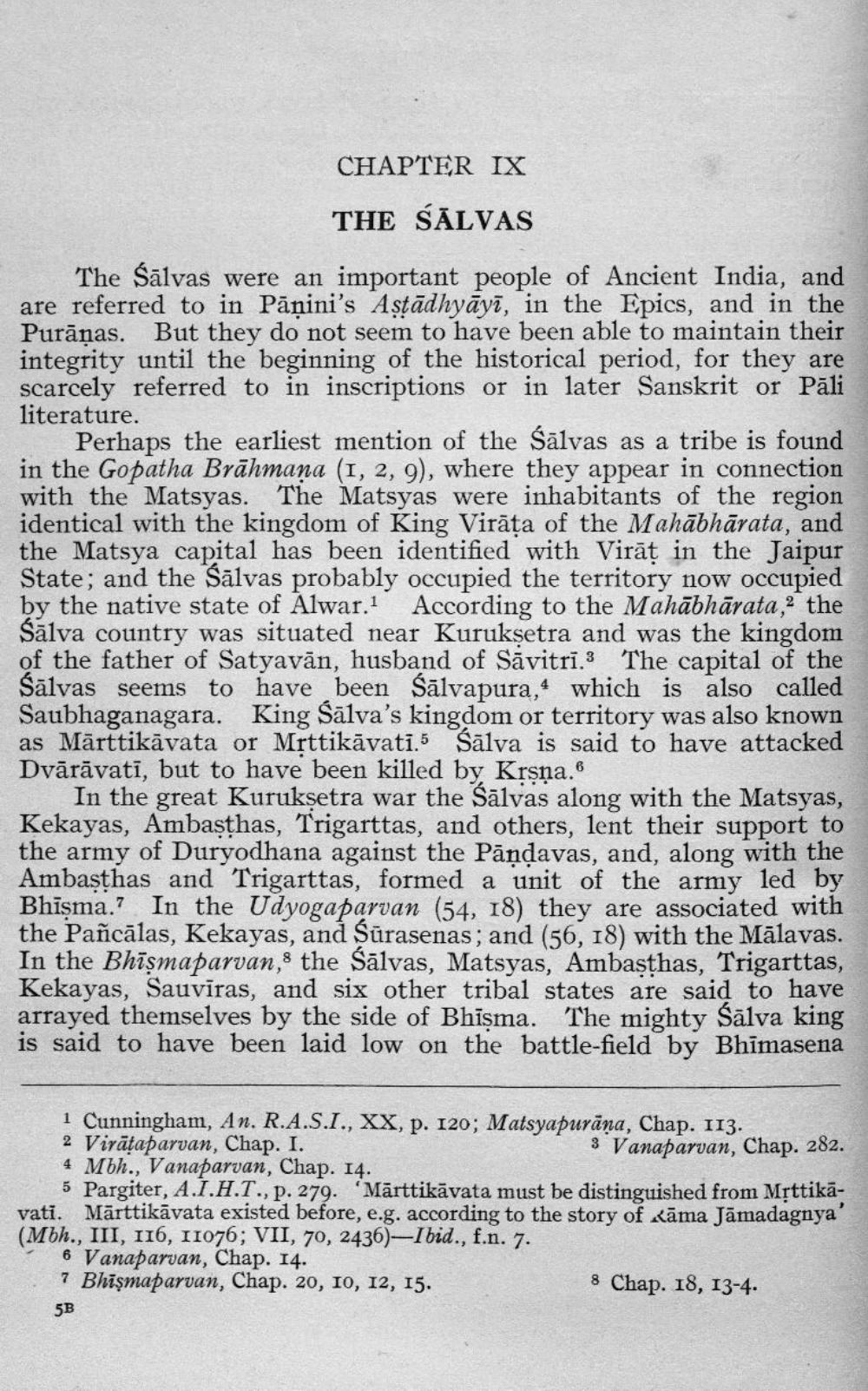________________
CHAPTER IX THE SĀLVAS
The Sālvas were an important people of Ancient India, and are referred to in Pāņini's Astādhyāyī, in the Epics, and in the Purāņas. But they do not seem to have been able to maintain their integrity until the beginning of the historical period, for they are scarcely referred to in inscriptions or in later Sanskrit or Pāli literature.
Perhaps the earliest mention of the śālvas as a tribe is found in the Gopatha Brāhmana (1, 2, 9), where they appear in connection with the Matsyas. The Matsyas were inhabitants of the region identical with the kingdom of King Virāța of the Mahābhārata, and the Matsya capital has been identified with Virāt in the Jaipur State; and the Sālvas probably occupied the territory now occupied by the native state of Alwar. According to the Mahābhārata, the Sālva country was situated near Kuruksetra and was the kingdom of the father of Satyavān, husband of Săvitrī.3 The capital of the Sālvas seems to have been Sālvapura, which is also called Saubhaganagara. King Sālva's kingdom or territory was also known as Mārttikāvata or Mrttikāvatī.5 Sālya is said to have attacked Dvārāvatī, but to have been killed by Krsna.8
In the great Kuruksetra war the Šālvas along with the Matsyas, Kekayas, Ambasthas, Trigarttas, and others, lent their support to the army of Duryodhana against the Pāndavas, and, along with the Ambasthas and Trigarttas, formed a unit of the army led by Bhīsma.? In the Udyogaparvan (54, 18) they are associated with the Pañcālas, Kekayas, and Sūrasenas; and (56, 18) with the Mālavas. In the Bhismaparvan, the Sālvas, Matsyas, Ambasthas, Trigarttas, Kekayas, Sauvīras, and six other tribal states are said to have arrayed themselves by the side of Bhīşma. The mighty Sālva king is said to have been laid low on the battle-field by Bhimasena
1 Cunningham, An. R.A.S.I., XX, p. 120; Matsyapurāna, Chap. 113. 2 Virātaparvan, Chap. I.
3 Vanaparvan, Chap. 282. 4 Mbh., Vanaparvan, Chap. 14.
5 Pargiter, A.I.H.T., p. 279. Mārttikāvata must be distinguished from Mộttikāvati. Mārttikāvata existed before, e.g. according to the story of Xāma Jāmadagnya' (Mbh., III, 116, 11076; VII, 70, 2436)—Ibid., f.n. 7.
6 Vanaparvan, Chap. 14. 7 Bhīşmaparvan, Chap. 20, 10, 12, 15.
8 Chap. 18, 13-4. 5B




